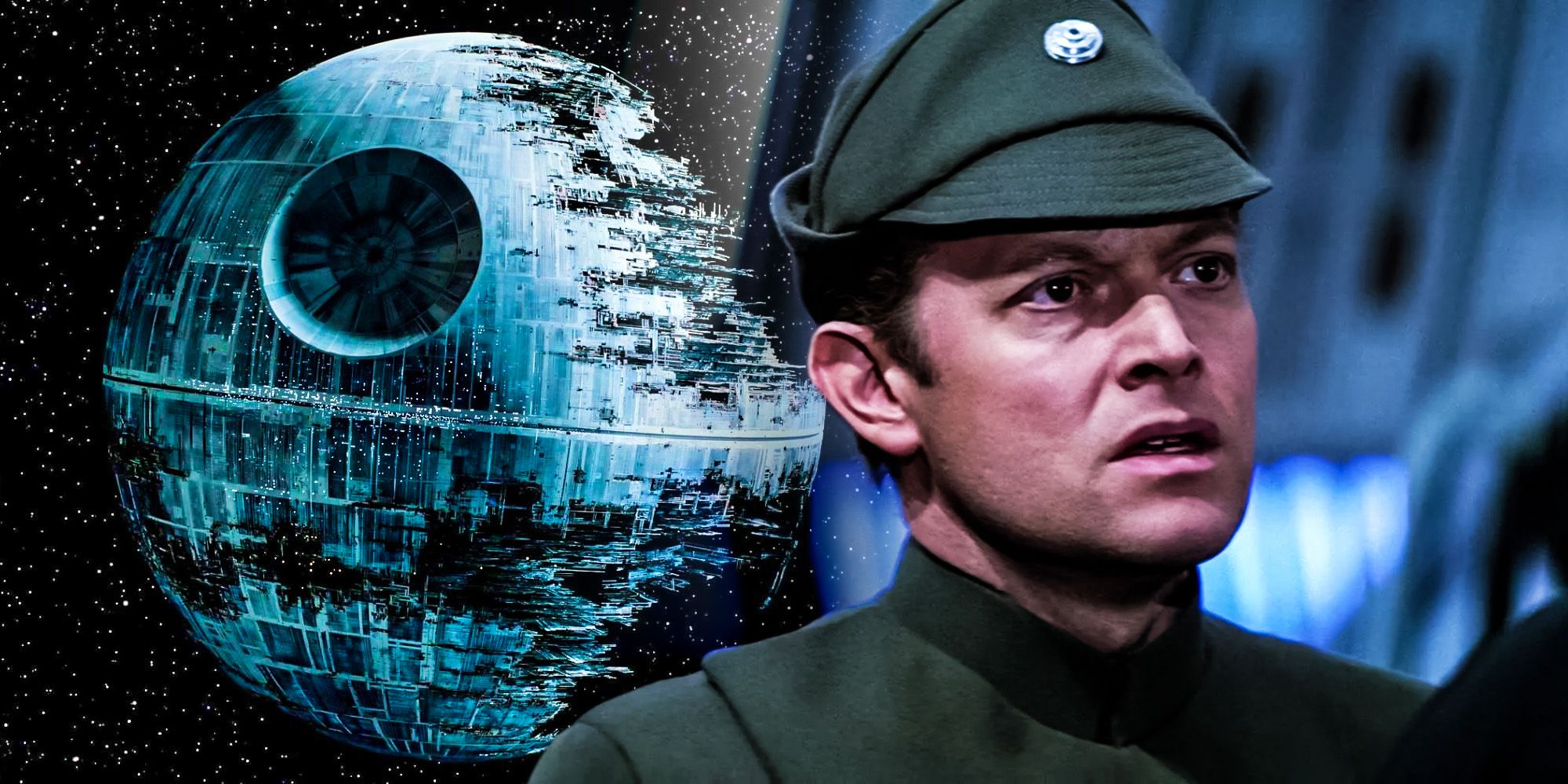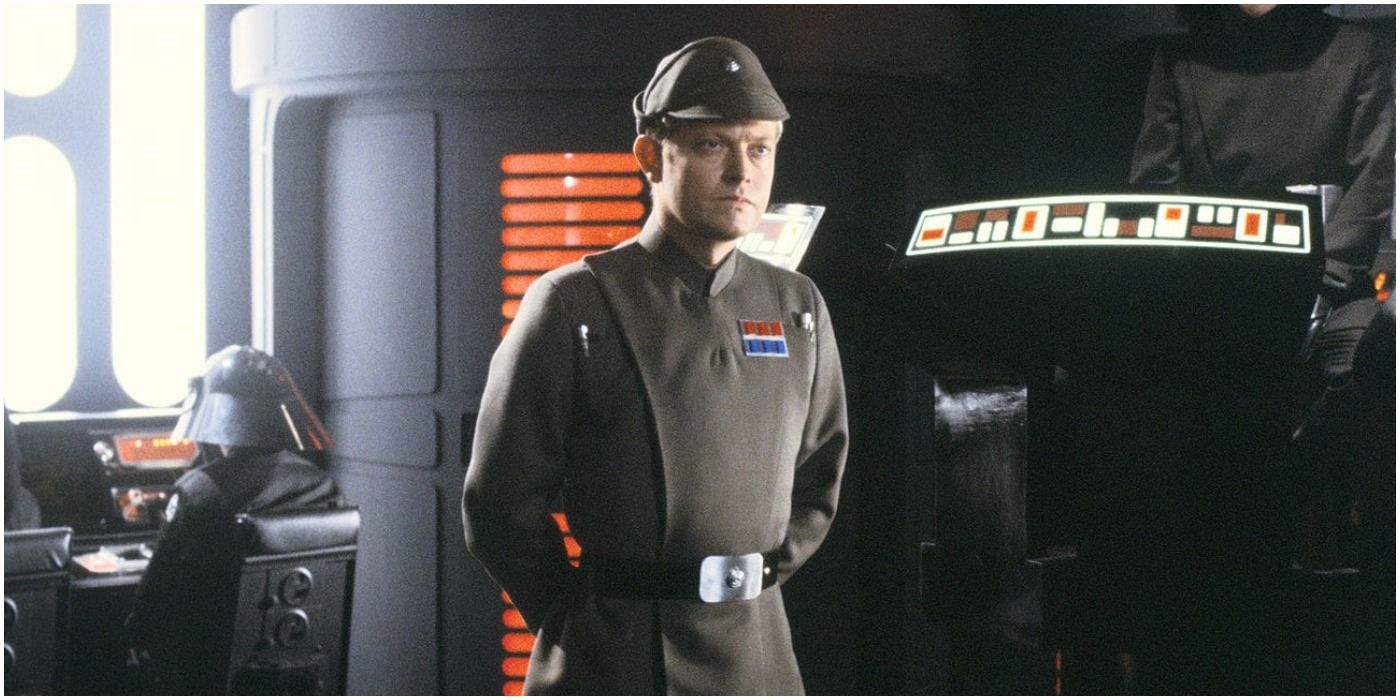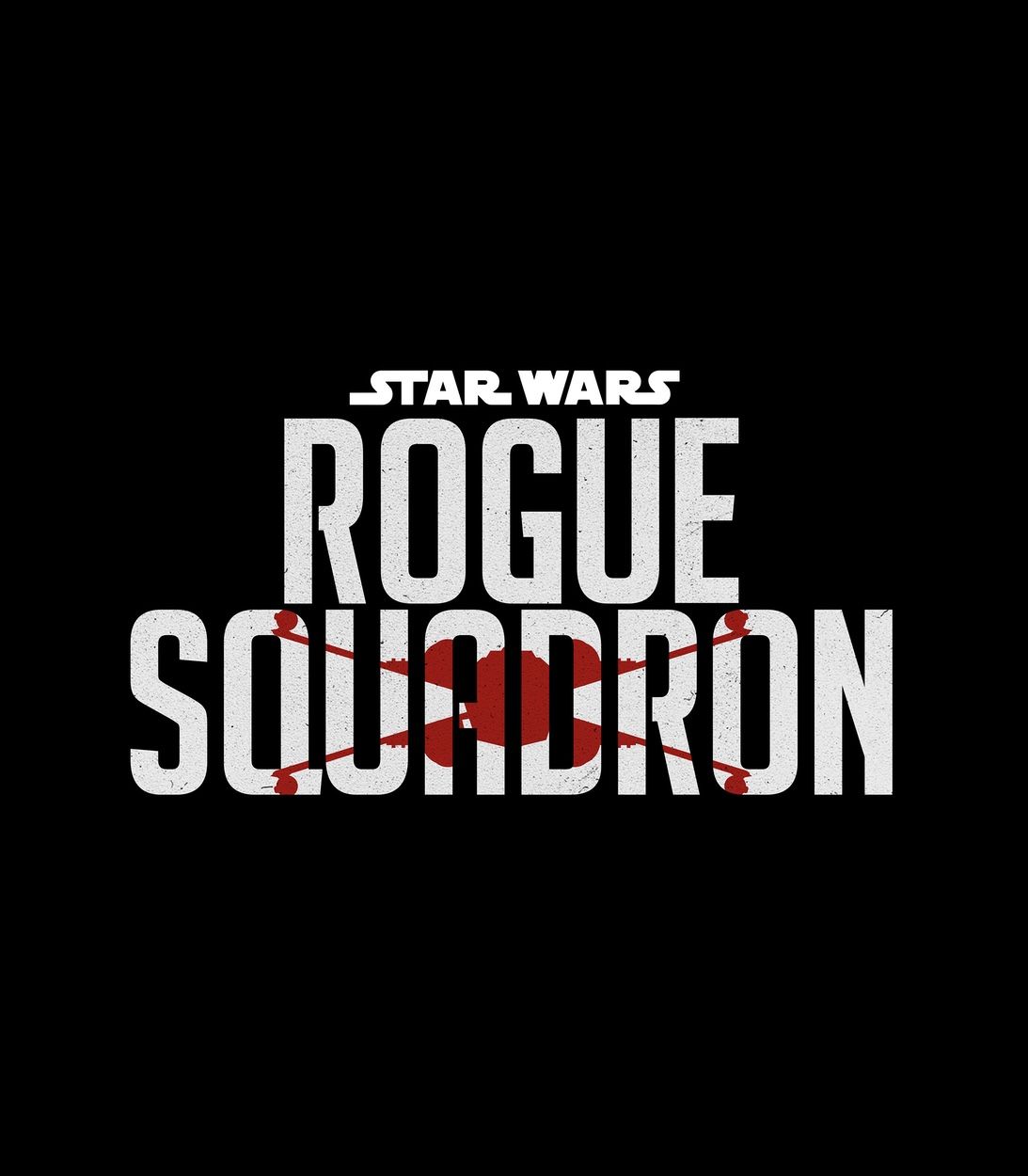The Rebel Alliance triumphantly destroyed the Second Death Star in Return of the Jedi, but their victory could have been much darker, thanks to a deleted sub-plot. Commander Jerjerrod had a relatively minor role in the film, serving as a far less ambitious replacement for Grand Moff Tarkin, but deleted scenes and rejected plot points nearly gave him a much larger role. One, in particular, put him in an unenviable position, courtesy of Emperor Palpatine, highlighting a rarely-seen human side of the Star Wars original trilogy’s Imperial villains.
In Return of the Jedi’s earliest story treatments, Jerjerrod was a Grand Moff and a much more similar character to Tarkin who worked with Emperor Palpatine in secret to undermine Darth Vader and ensure his replacement by Luke Skywalker. This ultimately led to Jerjerrod’s murder by Vader, who broke the treacherous Grand Moff’s neck upon discovering his betrayal. A deleted scene would later show Jerjerrod and two of The Emperor's Royal Guards attempting to block Darth Vader from entering Palpatine’s throne room, to which Vader threateningly Force choked the Commander so he’d let him pass.
As shown in Return of the Jedi’s deleted scenes, the film was originally going to include a sub-plot in which Palpatine ordered Jerjerrod to use the Death Star II to destroy Endor if the shield generator is deactivated. When the Rebels win the ground battle on Endor, Jerjerrod resigns himself to The Emperor’s command, yet hesitates to give the order, giving Lando Calrissian and Wedge Antilles the necessary time to destroy the battle station. Jerjerrod’s guilt and reluctance to obliterate Imperial troops shows a rare human side to the Star Wars franchise’s Imperial villains, though it in no way redeems them.
Although Jerjerrod is depicted as lacking the same commanding and threatening presence as Tarkin, he would have done the unthinkable and questioned a direct order from Emperor Palpatine himself in one deleted scene, prompting a more forceful repetition from the Sith Lord. Jerjerrod’s rationale is that there are Imperial troops stationed on Endor and he’d be killing them along with the Rebels if he fired on the Forest Moon. Jerjerrod’s hesitance to destroy Endor once the Death Star II was positioned to fire upon the moon further demonstrated his devotion to fellow Imperials, even under the threat of unfathomable consequences at the hands of Emperor Palpatine.
Imperial forces are often depicted as little more than one-note villains in the Star Wars original trilogy, and with good reason. The Empire is a genocidal fascist state which destroys entire worlds as demonstrations of their military might and executes Jedi and Separatists alike on sight. Unlike the Galactic Republic, whose military was made up of Jedi Knights and Clone Troopers in the prequel era, the Empire’s forces are made of recruits with fanatical and voluntary devotion to the Imperial cause.
The Galactic Empire’s recruits are ordinary beings who might not know or care about the atrocities they commit simply because they’re following orders without thinking about them, making them exemplify the concept of the “banality of evil.” The humanity of Imperial military forces is emphasized in numerous canon and Legends-era non-movie materials, but never at the expense of their villainy. Commander Jerjerrod was humanized in his Return of the Jedi deleted scenes, but his refusal to kill other Imperials with the Second Death Star’s superweapon doesn’t make him any less of a villain.



